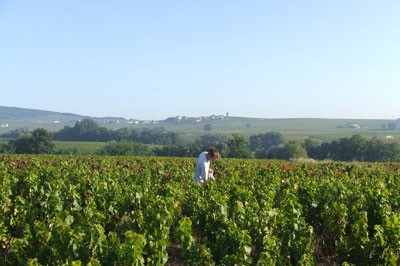Despite the fact that it has a completely different soil make-up, uses a totally different grape variety (Gamay), and is in reality not in Burgundy at all, Burgundians have always had a soft spot for Beaujolais. Although administratively a part of Burgundy (located to its North), Beaujolais has a climate more akin to the Rhône region, which overlaps its southern flank. The Beaujolais winemakers produce their wines (98% of which are red) on land alongside the meandering Saône river. This region produces a large amount of wine per year – two and half times more than the rest of Burgundy, in fact. There is a white Beaujolais, but it, like Burgundy, is Chardonnay. Around 2,000 winegrowers inhabit the region, continuing their age-old traditions of hand-picking and vatting entire bunches of grapes and covering them with a layer of carbon dioxide. Indeed, this method— known as carbonic maceration—is one of the defining qualities in this region; the fermentation starts inside the skin of the grapes which then rupture and release fresh grapey fruit flavors.

